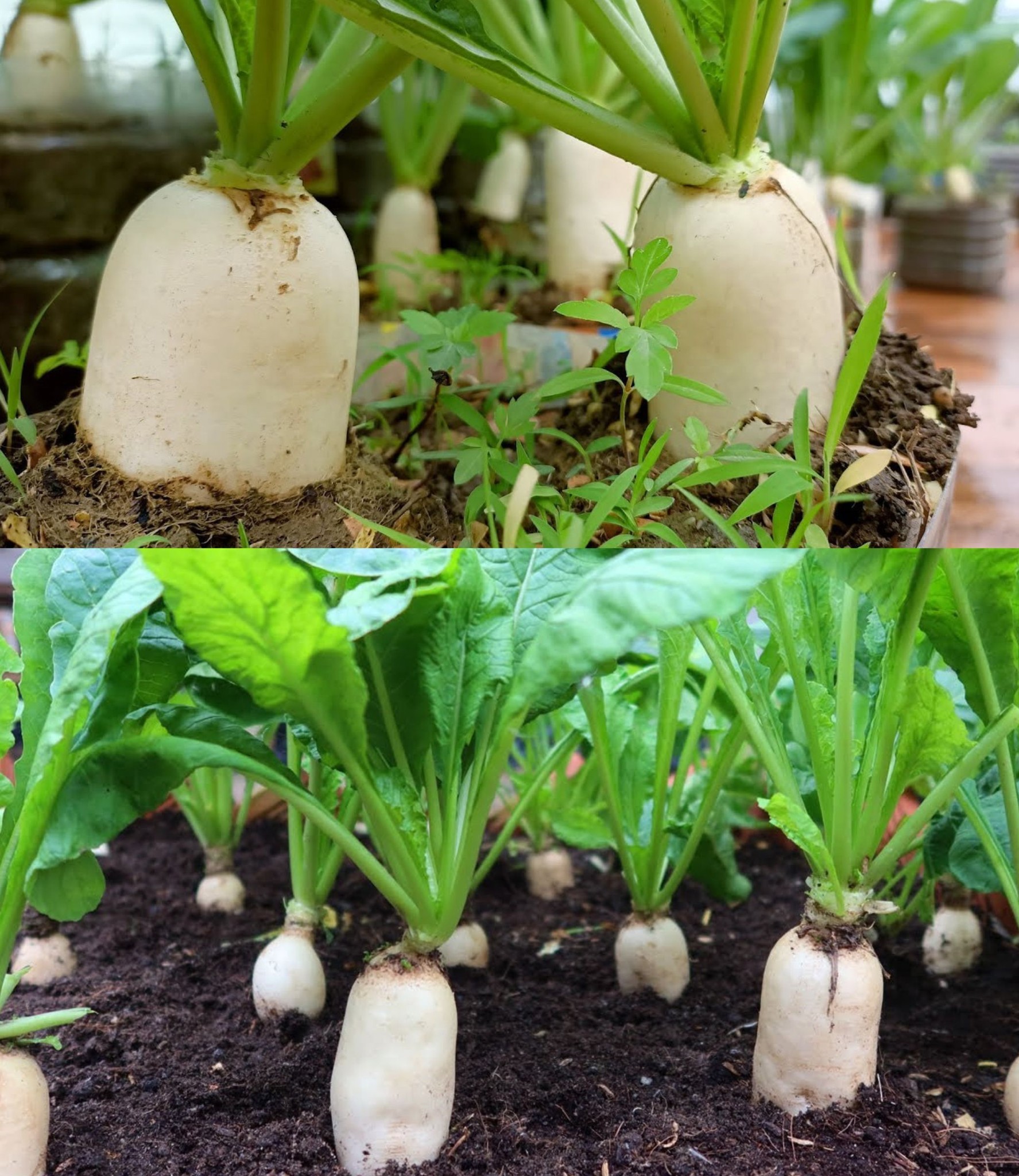
It Turns Out This Is The Most Effective Way To Grow Radish, Why Didn’t I Know It Sooner🌱
Radishes are generally easy to grow, but there are certain techniques that can enhance their growth and quality. If you’ve discovered a particularly effective way to grow radishes and are wondering why you didn’t know about it sooner, it could be due to the variety of information available and the diverse approaches to gardening. Here’s a comprehensive guide on an effective way to grow radishes:
**1. Choose the Right Variety:
- Radishes come in various shapes, sizes, and colors. Choose a variety that suits your preferences and growing conditions. Some popular varieties include Cherry Belle, French Breakfast, and Easter Egg.
**2. Select a Suitable Growing Location:
- Radishes thrive in well-drained soil with plenty of sunlight. Choose a location that receives at least 6 hours of direct sunlight per day.
**3. Prepare the Soil:
- Radishes prefer loose, well-draining soil. Amend heavy or compacted soil with organic matter, such as compost, to improve drainage and fertility.
**4. Planting Depth:
- Plant radish seeds at the appropriate depth, usually around 1/2 inch deep. Sow the seeds directly in the garden or containers, and thin the seedlings as they emerge to ensure proper spacing.
**5. Watering:
- Keep the soil consistently moist. Radishes prefer regular watering, especially during dry periods. However, avoid overwatering, as it can lead to rotting.
**6. Fertilization:
- Radishes don’t require heavy fertilization, but incorporating a balanced fertilizer into the soil before planting can promote healthy growth. Avoid excessive nitrogen, as it may encourage leafy growth at the expense of root development.
**7. Successive Planting:
- To ensure a continuous harvest, consider planting radishes in successive batches every 2-3 weeks. This staggered planting helps prevent a glut of radishes that mature all at once.
**8. Thinning Seedlings:
- Thin radish seedlings to the recommended spacing once they have a few true leaves. Adequate spacing allows each radish to develop without competition.
**9. Companion Planting:
- Planting radishes near other vegetables can have benefits. For example, planting radishes with carrots may help deter carrot fly.
**10. Pest Management:
- Radishes are generally resistant to pests, but keep an eye out for common issues like flea beetles. Consider using row covers or other pest control measures if needed.
**11. Harvesting:
- Radishes are usually ready for harvest within 3 to 4 weeks after planting. Harvest when the roots are firm and reach the desired size. If left in the ground for too long, radishes can become pithy and lose their crispness.
**12. Storage:
- For optimal freshness, store radishes in the refrigerator. Remove the tops before storing to prevent moisture loss.
It’s possible that the specific method you’ve found effective might involve a combination of these general tips or include a unique approach tailored to your gardening conditions. Gardening practices can vary, and discovering what works best for your specific environment is part of the learning process. If you’ve found success with a particular technique, celebrate your gardening achievements and continue to explore and experiment with new methods.
